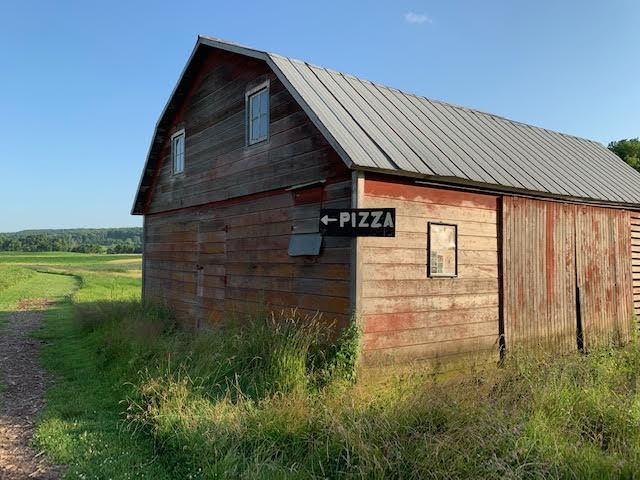
Recently, there has been a fair amount of writing and research on the contribution that rural and traditional working landscapes can make to landscape resilience, sustainability, and ecological diversity. All significant attributes that play a part in combatting climate change in the short and long term. The scale of rural and traditional working landscapes has also driven the need to integrate both a nature and culture perspective into their management.
For the most part, however, the contribution that cultural values can have towards the conservation of these landscapes has received less attention. Reviewing the designation programs for cultural landscapes is one way of teasing out the elements of cultural significance in these places. The World Heritage criteria that most directly applies to working landscapes states that cultural landscapes are sites where the interaction between people and their environment is considered to be of outstanding universal value. A closer examination of the people part of the equation is warranted.
Rural and traditional working landscapes are also a focus in other international programs, such as Biosphere Reserves and Globally Important Heritage Agricultural Systems. Many national and regional designations recognize the significance of rural cultural landscapes too, with an emphasis on elements such as historical values, traditional community and indigenous values, associative and spiritual values, and aesthetic and scenic values. All of these cultural dimensions enrich the lives of people – those living in the landscape, those benefiting from the products of landscape, and those choosing to visit and recreate in these places.
So, to effectively conserve rural landscapes for multiple benefits, it is important to sustain their cultural values. How might this occur? How do we identify the programs, practices, and policies that aid in this process. The examples below offer some ideas:
Practice 1: Land management strategies that incorporate the traditional practices used in working landscapes as well as traditional ecological knowledge.
For an example of how this might look on the ground, review the article, “NatureCultures from the Perspective of Argentina.” This dialogue featured a number of presentations from practitioners working on-the-ground in Argentina. The speakers examined the importance of cultural routes and the future of large-scale landscapes in defining the identity of a region.
Practice 2: Support for the creation and marketing of local products including the arts.
The Creative Economy and the Forest examines an effort in rural Northwest Pennsylvania to link together conservation, recreation and local business development under the auspices of the state’s Conservation Landscapes Initiative. What do these complex partnerships look like in practice and what can one rural community reveal about programs to support local talent and economic vitality?
Practice 3: Programs to convene regional partnerships in rural areas.
A National Heritage Area comes to Iowa looks at the collaborative strategies employed by Silos and Smokestacks National Heritage Area. Through partnerships, the heritage area has been able to tackle emerging local issues such as food security through heritage plants and breeds exchanges. This strategy has overcome the initial concerns of rural residents about governmental designation and outside control of agricultural resources. This nationally significant cultural landscape is still managed by the people that live in it, but with a much greater appreciation of the place they call home.
Practice 4: Governmental preservation of cultural landscapes.
Legal Protection for Rural Landscapes and their Heritage Values in Australia reviews the legal protection and policy frameworks that have been developed to preserve the heritage values of rural landscapes. In Australia, this protection varies. Public lands like national parks and conservation reserves are usually managed through their own legislation which sets out the management objectives and values that must be protected. Privately owned rural lands might be zoned rural, rural residential or conservation in local government planning schemes and this entails a range of policies enabling uses. ‘Rural zone’ land has the least constraints and is generally farming land -agriculture, horticulture, grazing, cropping. However, the suite of policies varies in different regions and States.
Practice 5: Recognizing the role of interpretation and storytelling in conservation.
Story Telling on a Landscape Scale explores the idea of using cultural objects or site-specific historic places as a way convey a story is customary practice in heritage interpretation. However, storytelling on a landscape scale is less common. Regional initiatives like heritage areas have demonstrated the power of this approach to build partnerships and unify a region. More recently the movement to conserve landscapes at scale has recognized the significance of storytelling to connect people to the resource that is particularly effective in large rural landscapes.
These are just a handful of ideas and examples that demonstrate how to sustain the role of culture as a building block of conserving rural landscapes. Critically, all of these approaches are based on people – recognizing traditional practices, building partnerships, revitalizing markets and communities, and telling local stories. And people are essential to creating the necessary resilience and sustainability to adapt to challenging future conditions. As stated in the Routledge Handbook of Cultural Landscape Practice “Culture is also a useful frame to think about change management because cultures are dynamic, and that dynamism is reflected in the changing meanings and valuing of heritage objects, practices, and places (Steve Brown and Cari Goetcheus, 2023).


